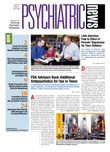The Government Accountability Office (GAO) has found that hundreds of students have been victims of abuse by teachers and school administrators through the use of seclusion and restraint and that such use has led to severe injury and even death. Although several states have enacted laws to address the issue, some in Congress think it is time for action at the federal level.
“What [the GAO] found is alarming and eye opening, and it is going to send shockwaves into every corner of this country, and it should,” said Rep. George Miller (D-Calif.), who requested the GAO report. He is chair of the House Education and Labor Committee.
The GAO, which released its report in May, found that no federal law restricts the use of seclusion and restraint in public or private schools and that state laws are “widely divergent” on the matter. In fact, 19 states have no laws or regulations related to the use of seclusion or restraint in schools.
Investigators identified hundreds of cases of alleged abuse and death in the past two decades related to the seclusion and restraint of school children. Cases included a 7-year-old boy who died after he was held face down for hours by school staff and a 13-year-old who was found hanging in a seclusion room after prolonged confinement. Other incidents involved teachers and aides tying children to chairs, taping their mouths shut, using handcuffs, denying them food, fracturing bones, locking them in small dark spaces, and sitting on them until they turned blue.
The GAO also examined the details of 10 restraint and seclusion cases in which there was a criminal conviction, a finding of civil or administrative liability, or a large financial settlement.
Several common—though unrelated—themes emerged from the examination of the cases. One of them was that many of the children suffered from such disabilities as autism and mental illness, the children were not physically aggressive, and their parents had not consented to the use of restraints or seclusion.
“Though it is not limited to students with disabilities, it is happening more often to these vulnerable children,” Miller said.
The GAO reported that no comprehensive, nationwide list of such incidents is maintained by any Web site, federal agency, or other entity. Some states, however, are tracking the use of seclusion and restraint. In California, for example, public schools reported 14,300 cases of seclusion, restraint, and other “emergency” interventions in the 2007-2008 school year. Texas public school officials reported restraining 4,202 students 18,741 times during the same academic year.
Whether the use of such techniques is ever necessary is a matter of debate. Bill East, executive director of the National Association of State Directors of Special Education, said that the techniques, if used properly, “can and should be used” in a few instances, such as when students are a threat to themselves or others.
Miller disagreed and called for seclusion and restraint to be replaced by techniques espoused under School Wide Positive Behavior Support programs. This approach establishes “a social culture and positive environment that uses data-driven decision making to foster appropriate behavior and improve academic achievement.” Results have included fewer office discipline referrals and problematic behavior, he said.
Reece Peterson, a special education researcher who has examined educators' use of seclusion and restraint, said a possible federal role could include the establishment of nationwide guidelines that specify the situations in which seclusion and restraint are appropriate Additionally, nationwide reporting to state education departments could provide monitoring for excessive use of these tactics.
Miller said some congressional action is likely. “Congress must step in and fill the void that has resulted in scars that may never heal for these children and their families who have been victims of this abuse,” Miller said. “I hope the next step will be to enact a federal policy to ensure the tragic stories we will hear today will never occur again.”
“Seclusions and Restraints: Selected Cases of Death and Abuse at Public and Private Schools and Treatment Centers” is posted at<www.gao.gov/new.items/d09719t.pdf>.▪
